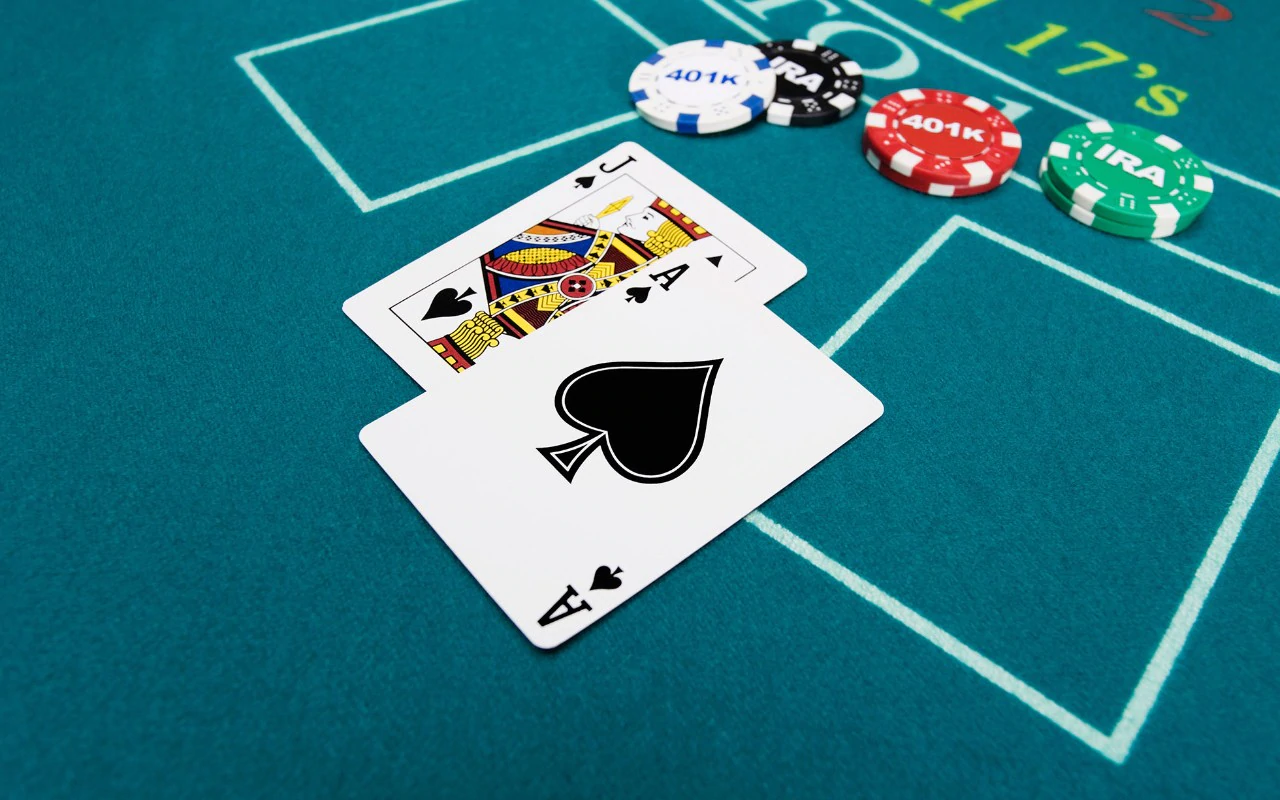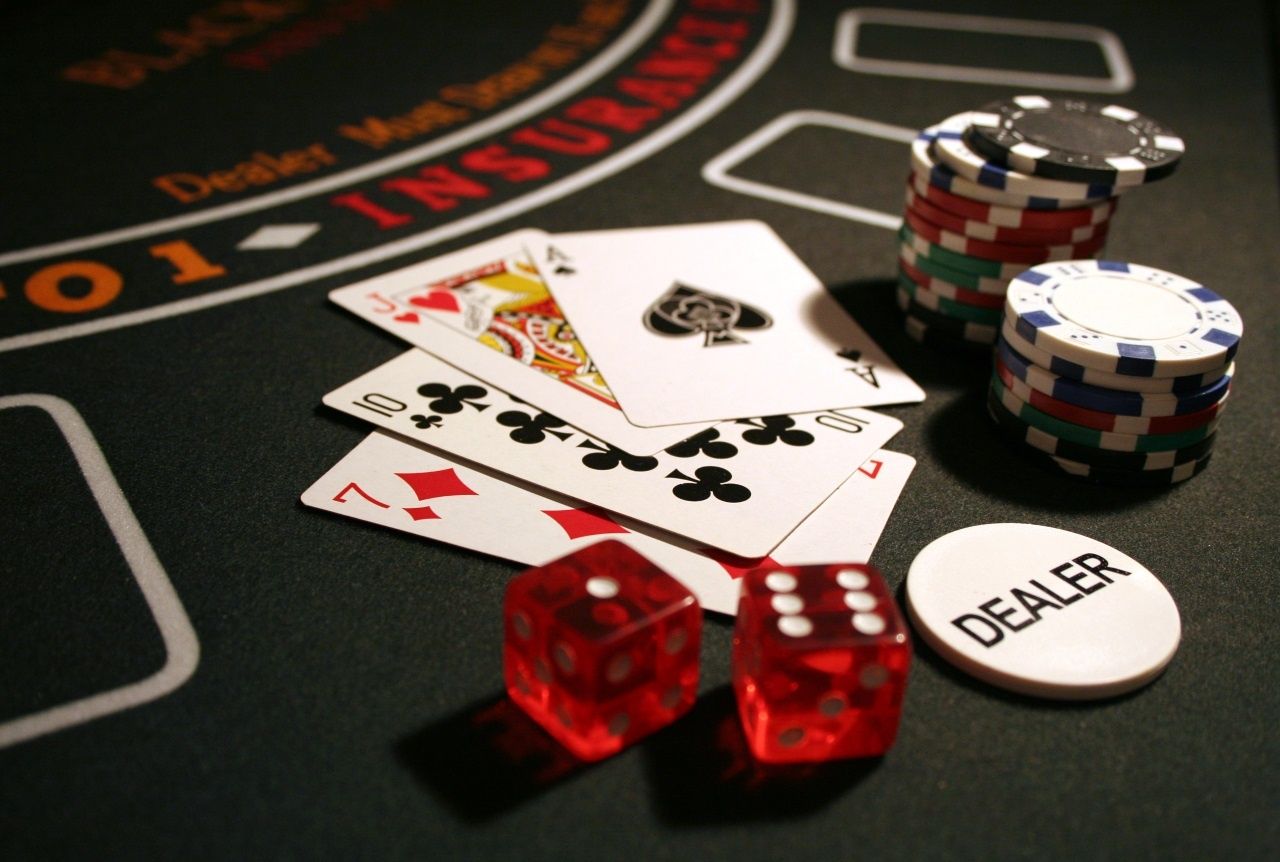Introduction
What Does It Mean To Surrender In Blackjack: In the enthralling world of blackjack, the concept of “surrender” presents players with a strategic choice that can significantly impact their gameplay and outcomes at the table. As one of the most popular casino card games, blackjack has captured the hearts of both novice and seasoned players alike, blending elements of skill, strategy, and anticipation.
To surrender in blackjack means to exercise a tactical maneuver, offering players the opportunity to relinquish half of their original bet and forfeit their hand under specific circumstances. Surrender is a player-friendly rule found in certain blackjack variants, providing a means to minimize potential losses when facing particularly challenging situations where the odds of winning are notably low.
With the power to surrender, players can navigate tricky scenarios, such as holding a hard 16 against a strong dealer upcard like a 9, 10, or Ace. Surrendering in such cases allows players to cut their losses, giving up half of their bet to avoid the risk of busting or facing a high probability of a dealer win.
This article explores the concept of surrender in blackjack, unraveling its various forms – early surrender and late surrender – and elucidating when it may be a strategic decision to employ. By understanding the nuances of surrender, players can enhance their blackjack experience, making informed choices to optimize their chances of success on the green felt. So, let’s delve into the realm of blackjack surrender and unveil the strategic maneuvers that lie at the heart of this captivating card game.
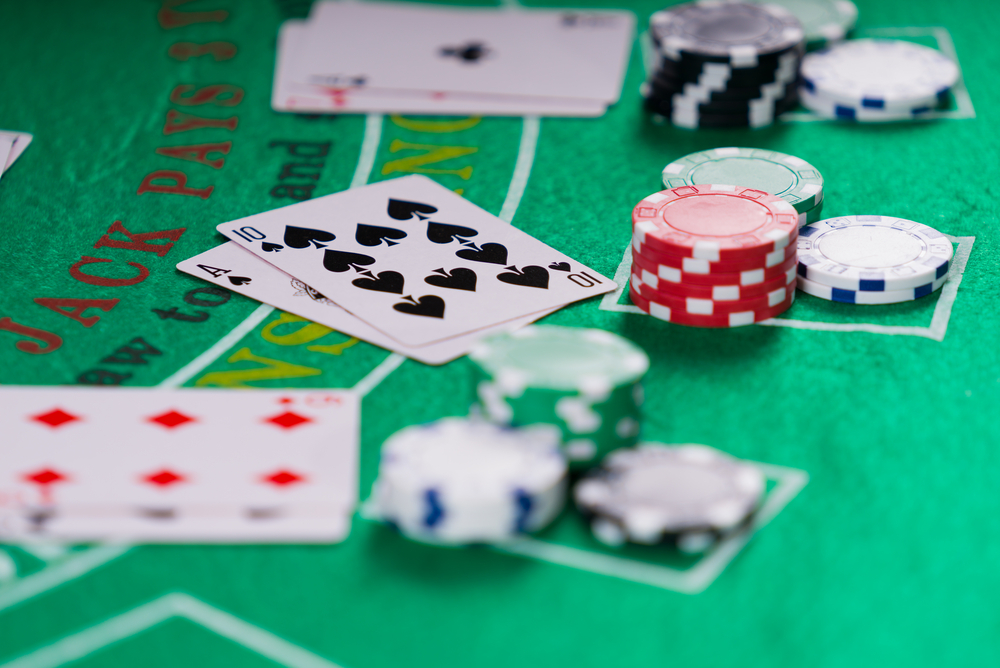
When should you surrender in blackjack?
If the rules seem reasonable you will want to surrender 14, 15 or 16 when the dealer has a 10 up. If the dealer has an ace, you will want to surrender hard 5, 6, 7 and 12, 13, 14, 15, 16, and 17. If the dealer hits soft 17, you will also want to surrender hard 4.
Surrendering in blackjack is a strategic move that allows a player to give up half of their original bet and forfeit their hand. It is a player-friendly rule offered in some blackjack variants, and it can be a valuable option when facing a difficult situation where the odds of winning are notably low.
The most common scenario in which surrender is advisable is when a player has a hard 16 (a hand without an Ace) against the dealer’s strong upcard, which is typically a 9, 10, or Ace. This is known as a “late surrender.” The probability of improving a hard 16 against these strong dealer cards is relatively low, making it a favorable situation to surrender. By giving up half of their bet, the player limits their losses in an almost unwinnable situation.
However, not all casinos offer late surrender. Some may only provide “early surrender,” where players can surrender before the dealer checks for blackjack if they have a weak hand like a hard 14, 15, or 16 against a dealer’s Ace. Early surrender is even rarer than late surrender.
It is crucial to note that surrendering should be used judiciously and in accordance with basic blackjack strategy. Surrendering too frequently can erode potential profits in the long run, so players should only surrender when the odds are heavily stacked against them. As with any blackjack decision, understanding the specific rules and odds of the game being played is essential to making the best choices for optimal play.
How much do you lose if you surrender in blackjack?
What does surrender mean in blackjack? Available on only some blackjack variants, it’s when you elect to throw away your cards rather than play on or stand. You lose half your stake and wait for the next hand.
When you choose to surrender in blackjack, you forfeit half of your original bet. The exact amount you lose depends on the size of your initial wager. If you surrender, you will lose 50% of the bet you placed at the beginning of the hand.
For example, let’s say you bet $100 at the start of the hand, and you decide to surrender. In this case, you would lose $50, which is half of your original bet. The other $50 is returned to you.
The purpose of surrendering is to mitigate potential losses in situations where the odds of winning are very low. By giving up half of your bet, you can limit the damage when faced with a challenging hand against a strong dealer upcard. Surrendering can be a prudent move when the probability of winning the hand is low, such as having a hard 16 against a dealer’s 9, 10, or Ace.
It’s essential to note that not all casinos offer the surrender option, and the availability of surrender may vary depending on the specific blackjack variant being played. Additionally, there are different types of surrender – late surrender and early surrender – which come into play at different points during the hand. Players should familiarize themselves with the specific rules of the game they are playing to make informed decisions on when and if to use the surrender option.
Should you surrender 16 in blackjack?
If you are deliberating surrender in Blackjack, you must consider the probabilities involved. If you have an opening hand with a hard value of 16 (not comprised of a pair of eights), you should surrender if the dealer has a face up card of nine, a card valued at 10, or an Ace.
Whether you should surrender a hard 16 in blackjack depends on the specific rules of the game and the dealer’s upcard. A hard 16 is a challenging hand because it is at risk of busting if you decide to hit, but standing on a hard 16 leaves you vulnerable against stronger dealer hands.
In some blackjack variants that offer the late surrender option, surrendering a hard 16 against a dealer’s 9, 10, or Ace can be a strategically sound move. This is because the dealer’s upcards in these situations are statistically more likely to result in strong hands, making it difficult for the player to win with their hard 16.
By surrendering, you give up half of your bet, but it allows you to limit your losses in a situation where the odds of winning are particularly low. This is especially relevant when the dealer’s upcard suggests a high likelihood of having a strong hand.
However, not all casinos offer the surrender option, and some may only provide early surrender, which allows surrendering before the dealer checks for blackjack. In such cases, surrendering with a hard 16 may not be possible.
In games without surrender, players are left with the options of hitting or standing with a hard 16. Here, basic blackjack strategy recommends hitting against a dealer’s 7 or higher and standing against a dealer’s 2 through 6.
Do Vegas casinos allow surrender in blackjack?
The best stand-on-all-17 blackjack tables in Las Vegas also add two player-friendly rules beyond allowing a double-down before and after splitting. The first is surrender, meaning the player can forfeit half of a bet and fold before hitting if the dealer does not have blackjack.
Most Las Vegas casinos offered the surrender option in blackjack, particularly the late surrender variant. Late surrender allows players to surrender their hand and give up half of their bet after the dealer checks for blackjack, making it a more favorable option for players.
However, it’s essential to note that casino rules can vary, and not all tables within a casino may offer the surrender option. Additionally, the availability of surrender can depend on factors such as the specific casino, the blackjack variant being played, and the table limits.
In Las Vegas, where blackjack is a popular and prevalent game, many casinos strive to cater to a wide range of players by offering various rule variations and betting options. This includes surrender, as it adds an extra layer of strategy and choice for players when facing challenging hands.
As with any casino game, it’s always advisable to check the rules and table signage before sitting down to play blackjack. This way, you can confirm whether surrender is allowed and understand any other specific rules that may be in effect.
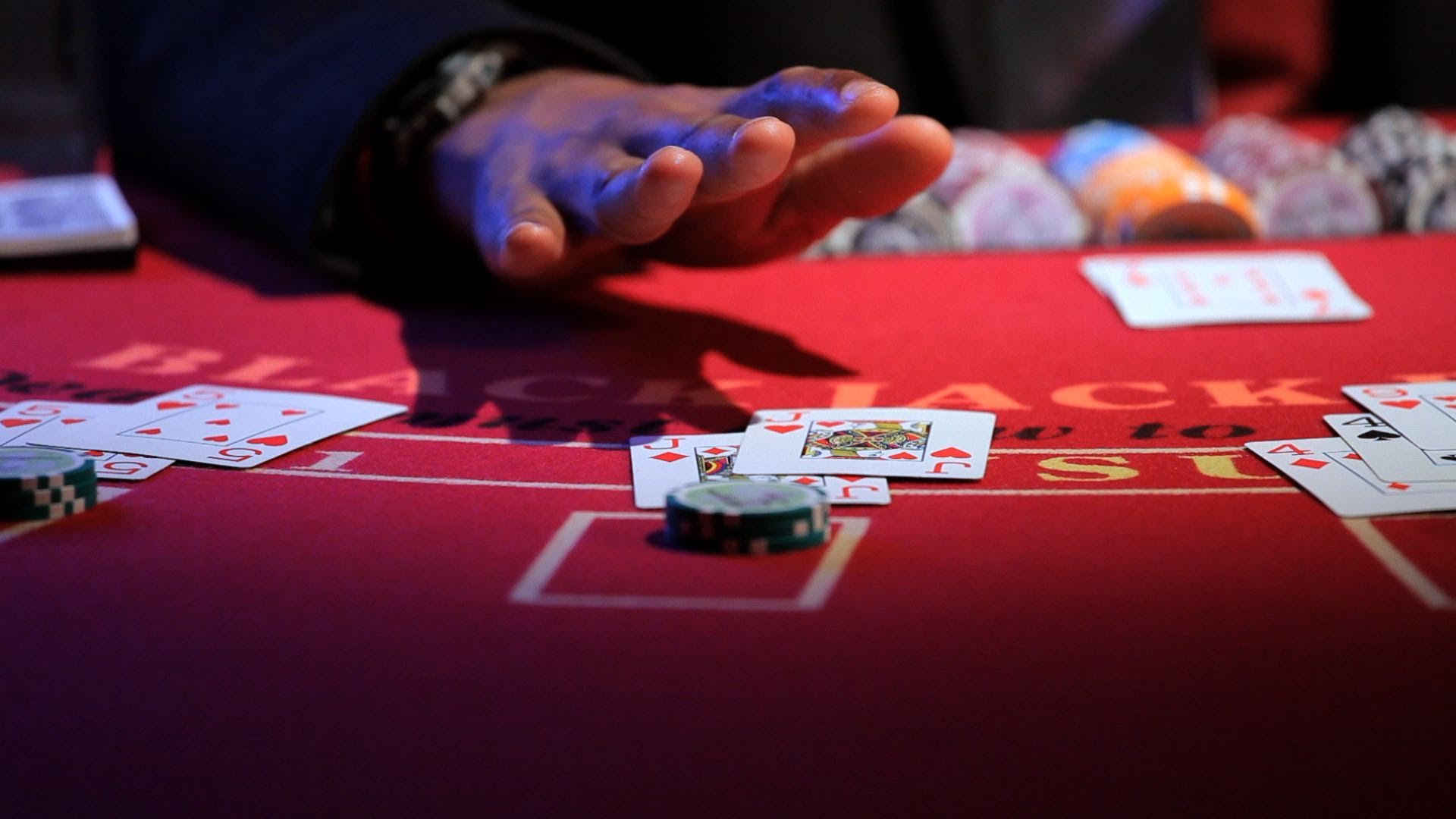
Do all blackjack tables allow surrender?
Different casinos have various blackjack games, each with different rules, such as the number of decks in play, whether the dealer must stand on soft 17, and whether surrendering is available. Some allow early surrender blackjack, some late surrender blackjack.
No, not all blackjack tables allow surrender. The availability of the surrender option in blackjack can vary from casino to casino and even from table to table within the same casino. The decision to offer surrender is ultimately determined by the casino’s specific rules and the blackjack variant being played.
Surrender is a player-friendly rule that allows players to give up half of their original bet and forfeit their hand in certain situations where the odds of winning are unfavorable. There are two main types of surrender: early surrender and late surrender.
Early Surrender: This is a more favorable rule for players, as it allows them to surrender and give up half of their bet before the dealer checks for blackjack. However, early surrender is quite rare and is not commonly found in most casinos.
Late Surrender: Late surrender is more common and is offered in many casinos. In this variant, players can surrender and give up half of their bet after the dealer checks for blackjack, making it a strategic option for challenging situations.
While some casinos may offer surrender as a standard rule at most tables, others may only have it available at specific tables or higher-stakes games. Additionally, some casinos may choose not to offer surrender at all, especially in games with other player-friendly rules or lower house edges.
As such, it’s crucial for players to check the rules and offerings of each blackjack table before playing to determine whether surrender is available as an option.
What does “surrender” mean in blackjack, and how does it impact a player’s bet?
In blackjack, “surrender” allows players to give up half of their original bet and forfeit their hand under specific circumstances. It is a strategic move offered in some variants of the game to minimize potential losses when facing unfavorable odds. By surrendering, players can cut their losses and avoid the risk of busting their hand or losing to a strong dealer hand.
When a player decides to surrender, they effectively admit that the chances of winning the hand are slim. By giving up half of their bet, they limit potential damages and preserve some of their bankroll for future hands. The impact of surrendering on a player’s bet is that they will lose half of their original wager.
The two main types of surrender in blackjack are early surrender and late surrender. Early surrender allows players to surrender before the dealer checks for blackjack, while late surrender allows surrendering after the dealer checks for blackjack. Late surrender is more commonly offered in casinos.
Using surrender strategically is important, as surrendering too frequently can erode potential profits in the long run. Players should employ surrender judiciously and in line with basic blackjack strategy to optimize their outcomes at the blackjack table.
When is it strategically advantageous to use the surrender option in blackjack?
Using the surrender option in blackjack is strategically advantageous in specific scenarios where the odds of winning are heavily stacked against the player. By surrendering, players can cut their losses and limit potential damages in situations where it is highly unlikely to achieve a favorable outcome.
One of the most opportune times to use the surrender option is when a player holds a hard 16 (a hand without an Ace) against a dealer’s strong upcard, typically a 9, 10, or Ace. This scenario often presents a difficult decision, as hitting the hard 16 risks busting, while standing leaves the player vulnerable against the dealer’s potentially strong hand. In such cases, especially when late surrender is available, surrendering can be a prudent choice.
Additionally, early surrender becomes strategically advantageous when a player holds a weak hand like a hard 14, 15, or 16 against a dealer’s Ace. In such situations, the odds of improving the hand are typically low, making it a wise move to surrender and cut losses early in the hand.
Using the surrender option at the right moment can be a powerful tool to protect a player’s bankroll and improve their overall long-term profitability. It allows players to avoid playing out unwinnable hands, reducing the impact of unfavorable outcomes and creating opportunities for more favorable hands in subsequent rounds.
However, it is essential to exercise caution and not overuse the surrender option. Surrendering too frequently can erode potential profits and negate the advantage of using this strategic tool. Employing surrender judiciously and in line with basic blackjack strategy will enhance a player’s ability to make informed decisions and optimize their chances of success at the blackjack table.
Are there different types of surrender in blackjack, and how do they differ in their timing and availability?
In some blackjack variants, the rules regarding surrender may be further modified to affect the player’s decisions and timing. For instance, some casinos may offer an option called “double after split” in combination with late surrender. This allows players to double down on their bet after splitting a pair, further enhancing strategic possibilities.
Additionally, surrender may not be available at all tables within a casino, even if the casino generally offers the option. High-stakes tables or tables with specific rule variations may omit surrender to maintain a higher house edge.
Moreover, the rules surrounding surrender can vary from one geographical region to another. For example, casinos in different countries or states may have varying policies on surrender, affecting players’ options when playing in different locations.
Players should familiarize themselves with the specific rules and offerings of each casino or table before making decisions about surrendering. Understanding the timing and availability of surrender is crucial to employing it strategically and enhancing one’s blackjack gameplay.
As with any strategic option in blackjack, the key to maximizing the advantages of surrender lies in using it judiciously and in line with basic blackjack strategy. Properly assessing the odds and weighing the risks and rewards will empower players to make informed decisions and optimize their outcomes at the blackjack table.
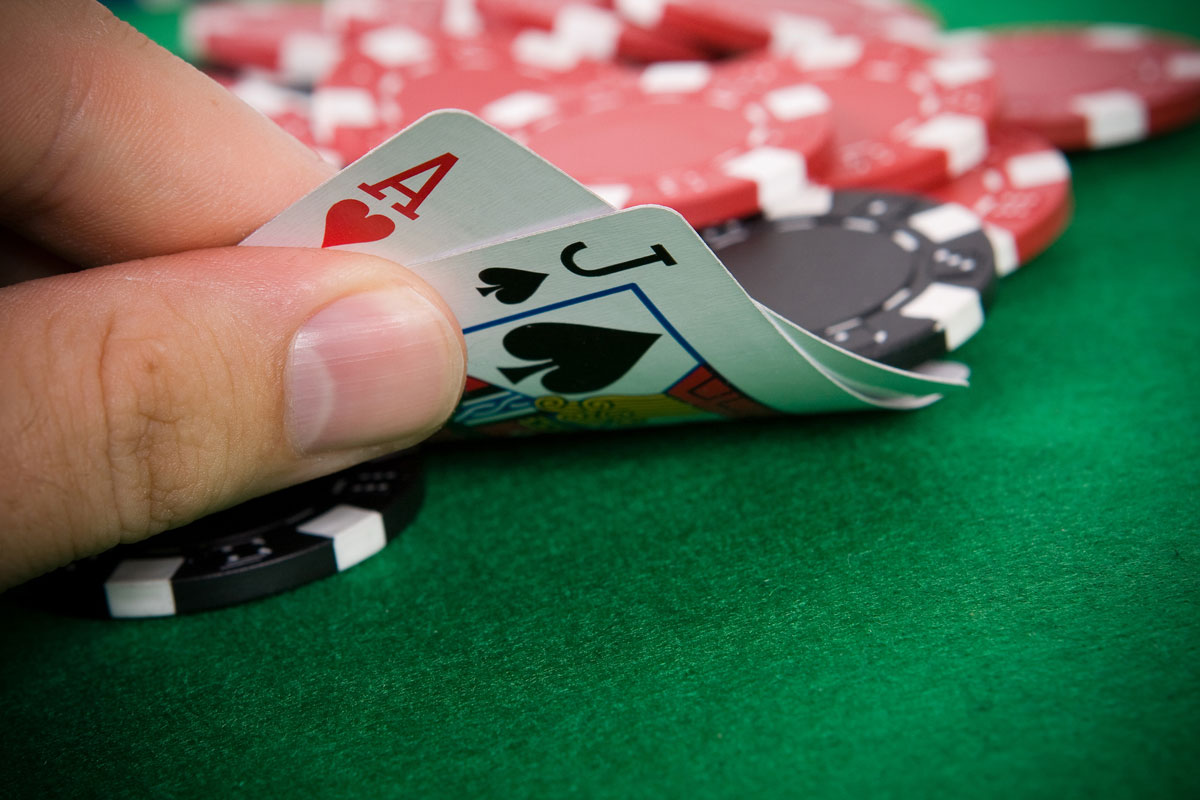
Conclusion
Surrendering in blackjack is a valuable strategic option that empowers players to navigate challenging situations and make informed decisions at the blackjack table. It is a player-friendly rule offered in certain blackjack variants, providing an opportunity to mitigate potential losses when facing unfavorable odds.
The concept of surrendering allows players to give up half of their original bet and forfeit their hand in specific scenarios, such as holding a hard 16 against a strong dealer upcard. By surrendering in such situations, players can limit their losses, avoiding the risk of busting or confronting a highly probable dealer win.
There are two main types of surrender in blackjack: early surrender and late surrender. Early surrender enables players to surrender before the dealer checks for blackjack, though it is relatively rare in most casinos. On the other hand, late surrender, which is more common, allows players to surrender after the dealer checks for blackjack.
By understanding the different forms of surrender and when to utilize them, players can enhance their blackjack strategy and maximize their chances of success. However, it’s essential to remember that surrender should be used judiciously and in alignment with basic blackjack strategy, as surrendering too frequently can erode potential profits in the long run.
In the dynamic realm of blackjack, surrender represents a powerful tool that empowers players to make calculated choices, weighing the risks and rewards to optimize their outcomes at the blackjack table. As players explore the depths of this captivating card game, the art of surrendering adds an additional layer of excitement, offering a strategic escape route when the odds seem stacked against them.




